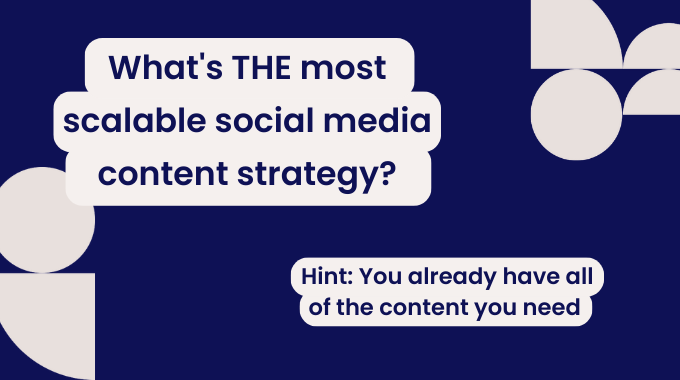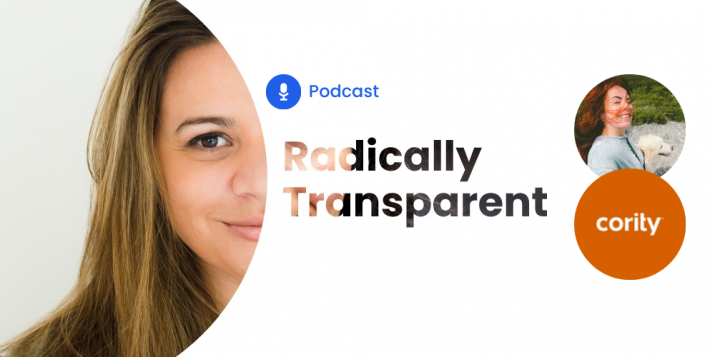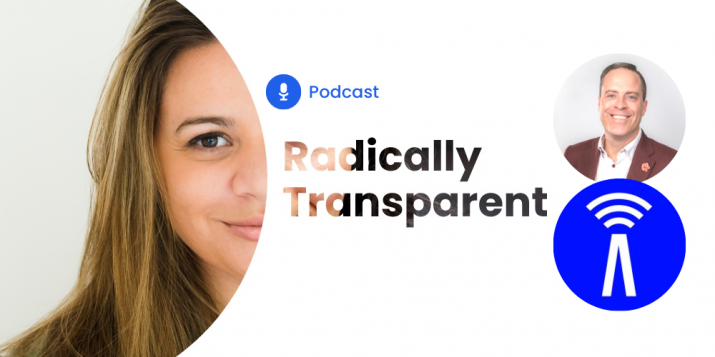
The benefits of repurposing content for social media marketing
Table of contents
Content is king, but only if it’s original.
We’re all on familiar terms with ‘copy and paste’. But in marketing, deploying the same assets across multiple networks that require different content types won’t cut it. However, a solid content repurposing strategy can help you work smarter, not harder. It helps you maximize the value of your existing content, allowing you to engage with a broader audience across various channels and platforms.
So if content repurposing goes beyond mere ‘copying and pasting,’ what exactly does it entail, and why should it be a fundamental element of your social media marketing strategy? Continue reading to find out.
Jump Ahead:
- What is repurposing content?
- What is the difference between repurposing and duplicating content?
- Why repurpose content?
What is repurposing content?
Content repurposing is the practice of putting old, previously published content to use elsewhere. For example, you can take a blog post and repurpose it into multiple different assets that add value in unique ways: an engaging thought leadership post for employee advocacy, a short video summarizing the main points for your corporate social accounts, and a condensed summary of a few key points for a tweet.
The right social media marketing platform will offer 360° insights into how your posts perform, making it easy to identify content that’s ripe for repurposing. This way, rather than working from scratch, you’re working from content that has already proven itself to be useful and insightful to audiences. It’s efficient in many different ways and a practice that any business should consider. Without repurposing, you’re underutilizing every piece of fresh content you generate, and investing more time with less returns.
What is the difference between repurposing and duplicating content?
Repurposing content means giving it a new life – using it to create something new. Duplicating content simply means reposting it ‘as is’, and offers nothing new to audiences.
Repurposed content holds a lot more value for SEO. While, yes, it’s based on existing content, it’s also a unique piece of content in its own right, with something unique to offer to the audience it’ll be brought to. This difference is key.
We’ve put together a guide on how to repurpose content, particularly when it comes to addressing the unique formats different social media channels present, with all the insights you need to know to get started.
Recommended for further reading
Why repurpose content?
It’s the most scalable social media content strategy
Any good social posting strategy is built around two things: quality and quantity. Utilizing your social channels means investing plenty of time and resources into ensuring that you’re posting consistently and that what you’re posting is going to engage readers.
That’s all easily said, but not so easily done. How can you stay on top of content creation, maintaining quality and value to audiences, without steadily increasing the size of your content creation team, too?
You guessed it – by repurposing existing content that has already proven its quality and value to audiences.
If your social posting strategy includes plenty of repurposed content, you’re enabling the business to extract far more long-term value out of each new piece of content created.
It doesn’t mean content creation should grind to a halt – you still want to publish plenty of original posts to social media – but it does mean you can scale your social media content strategy beyond its original parameters without doubling the size of your content team.
It means you will always be prepared to jump on trending conversations
Taking an ad hoc approach to content creation is a big hurdle for streamlining your social media publishing workflow. This is because being able to action your social listening insights and claim a good share of voice in topical conversations depends on your being ready with the right content to publish as trends start to take momentum.
Creating content in bulk and then preparing it for future publication is key, and content repurposing is another aspect of that. It diversifies your content stores, meaning you’re always prepared to publish content relevant to trending subjects in your industry.

You’ll reach new audiences
Different channels reach different audiences. LinkedIn, X, TikTok, Facebook – they’re all unique, and different types of content will find more success on some channels than others.
Reaching varied audiences depends on your ability to hone your content strategy, and devise new and creative ways to reuse content on social media. A 280-character sentence isn’t making the most of LinkedIn’s format, for instance, while a long-form video is better trimmed down to a few bitesize clips for Instagram reels. Different platforms cater to differing attention spans and preferences. If you can adapt your content for each platform, you can enjoy a much bigger audience across your channels.
You’ll be able to keep up with your social publishing strategy
Consistency is key. One of the reasons some businesses are still struggling to see a compelling ROI from social media marketing is that, unless they make a real commitment to scheduling content and publishing regularly, they won’t see the results that will incentivize them to invest more time and resources into social posting.
This is a real waste, but we get it – consistently producing quality content that will engage your audiences and drive up that ROI isn’t always easy.
This is why so many brands split their social publishing between original content, curated content (from other resources), and repurposed content. That way, keeping up with your social posting schedule isn’t a case of constantly chasing your own tail. You won’t need to settle with filler content but, instead, can always post something genuinely worth interacting with.
You’ll have more time to put together quality content for the future
If you’re struggling to keep up with your publishing schedule, chances are that quality is suffering. It’s an unavoidable trade-off that often ends with sacrificing quality to meet the time crunch. If you’re unwilling to sacrifice that quality, you’ll create great content, but it won’t necessarily be consistent.
Creatives underpin your social media campaign strategy, and creatives work best in spaces that allow them to be creative. Therefore, if you’ve got a month’s worth of content scheduled ahead of time on your social media management platform, they have the space they need to create compelling visuals that drive interaction and engagement.
Repurposed content can feed into your social advocacy program
Turning your workforce into employee advocates offers some incredible benefits, from embracing the power of social proof to humanizing your brand, and empowering your employees to share their unique perspectives and excel in thought leadership.
But, again, it relies on your team having the time and space they need to create that content.
Repurposing content for your employee advocacy program will ensure there’s always a wide variety of content they can post to their own channels, enabling you to reap the benefits of employee advocacy, without requiring too much effort from your advocates.
Integrate content repurposing into your social strategy for an elevated impact
If you’re looking to create a more impactful social strategy at scale, content repurposing is the way to go. Knowing how (and when) to repurpose content is a real skill for anyone involved in content creation, publication, and marketing. It’s about extracting value from quality content, maximizing reach and engagement, and consistently positioning your brand as a key, authoritative source in your industry.
The benefits of content repurposing are clear. You’ll save valuable time, optimize content for different platforms, engage a wider audience, and extract the most value possible from each original content piece you make.
It’s a win-win for any marketing team looking to do more with less.
Complement your social strategy with the only social media management platform that combines social media publishing, advocacy, and analytics all on one easy-to-use platform. Contact one of our experts to learn more.




